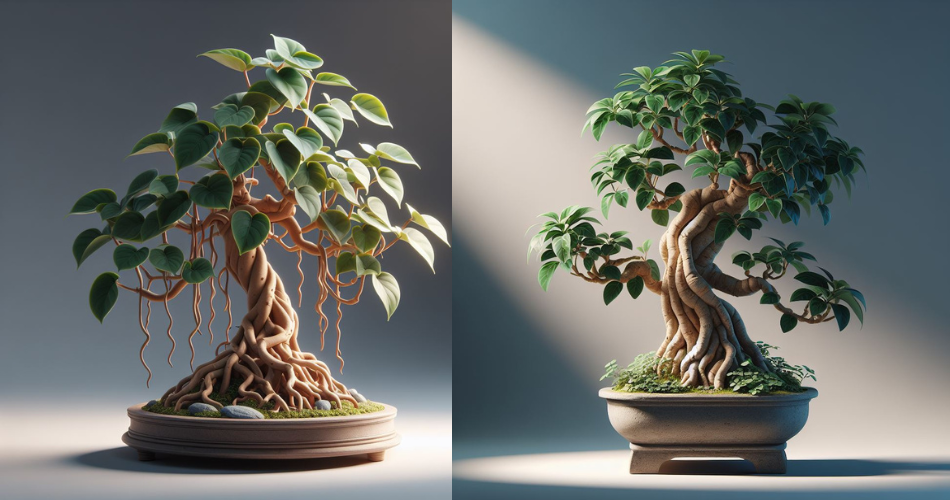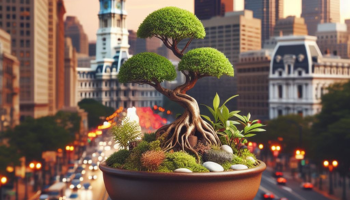
While the mystique of bonsai trees often revolves around their perceived difficulty in care, tales of these miniature wonders thriving for centuries persist. Intrigued by these narratives, I embarked on a quest to delve into the lifespan of bonsai trees. Astonishingly, these diminutive marvels can endure for hundreds of years, with the current record-holder boasting over a millennium of existence.
Bonsai trees, unlike their petite appearance, can potentially outlive their counterparts in nature by a significant margin. The meticulous care and maintenance bestowed upon them contribute to an extended life, surpassing their wild counterparts by an impressive 25%. Let’s unravel the reasons behind this longevity.
The lifespan of a bonsai tree is intricately tied to its care, health, and not the confined space of its pot. Depending on the level of care, a bonsai tree can either succumb within a mere five months or flourish for a millennium. Despite their miniature stature, bonsai trees share genetic similarities with their counterparts in nature, ensuring a comparable lifespan if cared for appropriately.
Factors influencing the lifespan of a bonsai tree are myriad. The species, environment, general care, and even a bit of luck contribute to determining how long these captivating creations will endure. Some species exhibit a natural inclination to live longer, thriving under optimal conditions. The environment plays a crucial role, requiring meticulous attention to create the perfect setting for robust growth. Regular care, including watering, pruning, repotting, and pest maintenance, ensures the bonsai’s sustained health.
What is Oldest Bonsai Tree?
Delving into the world of bonsai trees, one cannot help but be captivated by their timeless allure and the stories they carry. Among these miniature marvels, a notable figure stands as a symbol of endurance and resilience—the oldest bonsai tree in existence.
At the forefront of this distinguished group is a Ficus bonsai, proudly boasting an age surpassing 1000 years. Nestled within the Crespi Bonsai Museum, this venerable tree has weathered the sands of time, becoming a living testament to the art of bonsai cultivation.
The remarkable journey of this ancient Ficus is a tale woven through the hands of dedicated caretakers. Originally entrusted to Chinese Bonsai Masters, the tree later found itself under the meticulous care of a Japanese Master named Shotaro Kawahara. This passing of the torch from one skilled cultivator to another adds layers to the narrative of this extraordinary bonsai.
The Crespi Bonsai Museum now stands as a guardian of this ancient arboreal wonder. The tree’s resilience is not only a testament to the artistry of its caretakers but also to the enduring spirit of nature encapsulated in bonsai form.
While the Ficus claims the title of the oldest known bonsai tree, it’s essential to acknowledge the collective beauty of these miniature masterpieces. Bonsai trees, regardless of age, embody a rich history and a dedication to the craft. Each tree holds a unique story, contributing to the ever-growing tapestry of the bonsai world.
The search for the oldest bonsai tree is not merely a quest for age but an exploration of the art, skill, and passion that goes into nurturing these living works of art. As we marvel at the Ficus’s millennium-long journey, we also celebrate the countless other bonsai trees that stand as living testaments to the beauty of cultivation and the enduring spirit of nature in miniature form.
A fascinating example of bonsai resilience is the White Pine, estimated to be around 400 years old and having weathered the Hiroshima disaster. This living testament to endurance showcases the potential for bonsai trees to outlive their species when provided with exceptional care.
The title of the oldest bonsai tree is currently held by a Ficus, standing proudly at over 1000 years old. However, achieving such remarkable age requires impeccable care and nurturing. This particular Ficus has a rich history, having been cared for by Chinese Bonsai Masters before being entrusted to the renowned Japanese Master, Shotaro Kawahara.
Proper care is paramount in ensuring a healthy bonsai. The environment, whether outdoor or indoor, significantly impacts a bonsai’s well-being. Outdoor species require a period of cold weather for dormancy and may perish if kept indoors for extended periods. Adequate watering, soil monitoring, and temperature control are crucial elements of bonsai care.
Trimming plays a vital role in maintaining a bonsai’s miniature stature. Contrary to appearances, bonsai trees maintain a regular growth cycle. Skillful trimming is essential for preserving their small size while ensuring long-term health. Different tree varieties respond uniquely to pruning methods, necessitating a tailored approach for coniferous and deciduous trees.
Fertilization also plays a critical role in a bonsai’s health. Nitrogen, Phosphorus, and Potassium are essential components of a balanced fertilizer, promoting optimal growth and preventing disease. The application of the right fertilizer at the appropriate times of the year is essential for a bonsai’s overall well-being.
In conclusion, bonsai trees have the potential to live for centuries when cultivated with care and precision. Following age-old techniques and embracing a deep understanding of each tree’s unique needs can extend their lifespan by a significant margin. While there is no precise expiration date for bonsai trees, the secret lies in attentive and dedicated care. Share with us the age of the oldest bonsai in your collection and let the legacy of these miniature marvels continue to flourish!
FAQ:
- Q: How long can a bonsai tree live with proper care?
- A: Bonsai trees, with meticulous care, can thrive for several decades and even centuries, outliving their counterparts in nature.
- Q: What factors influence the lifespan of a bonsai tree?
- A: Factors such as species, care routine, environmental conditions, and disease prevention play a crucial role in determining how long a bonsai tree lives.
- Q: Can a bonsai tree outlive its natural counterpart?
- A: Yes, with dedicated care and attention, bonsai trees often surpass the lifespan of their counterparts in the wild by receiving constant rejuvenation and maintenance.
- Q: Is there an expiration date for bonsai trees?
- A: Bonsai trees don’t have a fixed expiration date. As long as they remain healthy, disease-free, and vigorous, they can endure for many years, if not centuries.
- Q: What are the essential care practices for extending a bonsai tree’s life?
- A: Regular watering, proper pruning, repotting, pest management, and disease prevention are key care practices for enhancing the longevity of a bonsai tree.
- Q: Are there specific species that live longer as bonsai trees?
- A: The lifespan varies among species, but generally, with the right care, many bonsai species can live exceptionally long lives, comparable to their lifespan in nature.
- Q: Can a bonsai tree live indoors, and does it affect its lifespan?
- A: While some bonsai species can thrive indoors, providing adequate sunlight and environmental conditions is crucial. Indoor bonsai trees can have a lengthy lifespan if their needs are met.
- Q: Does the age of a bonsai tree affect its potential lifespan?
- A: The age at which a bonsai is started doesn’t necessarily determine its lifespan. Continuous care and maintenance throughout its life contribute significantly to its overall longevity.
- Q: Are there documented cases of exceptionally old bonsai trees?
- A: Yes, there are documented cases of bonsai trees, such as the Ficus over 1000 years old, showcasing the incredible potential for longevity with proper care.
- Q: How can one ensure the health and longevity of their bonsai tree?
- A: Regularly monitor watering, provide appropriate light, follow a consistent pruning routine, and stay vigilant against pests and diseases to ensure the health and longevity of your bonsai tree.

